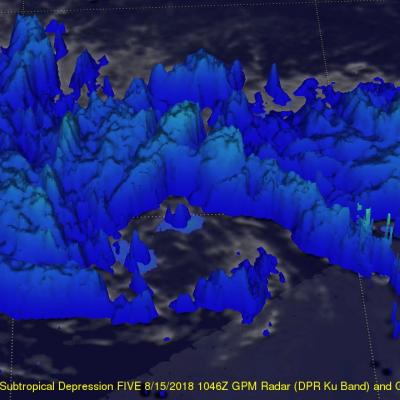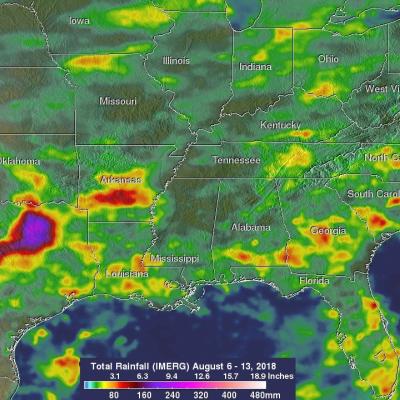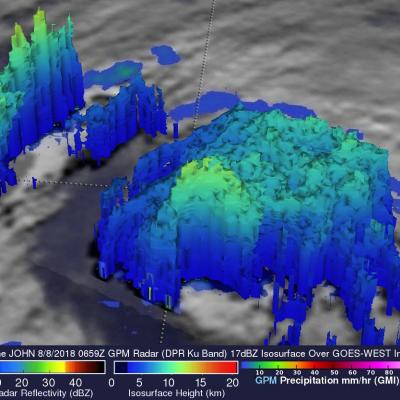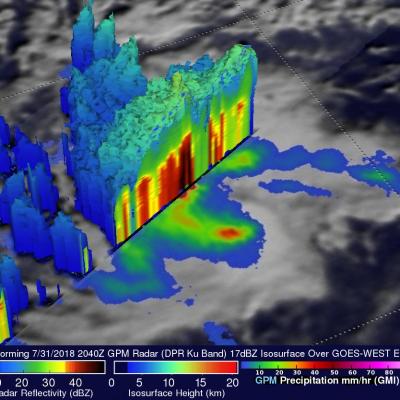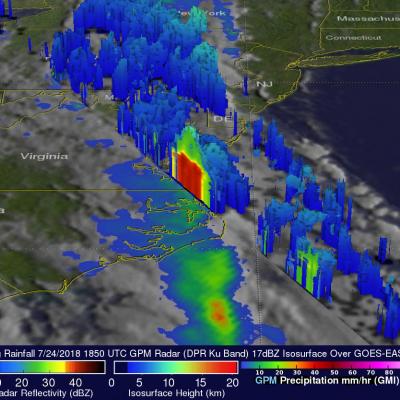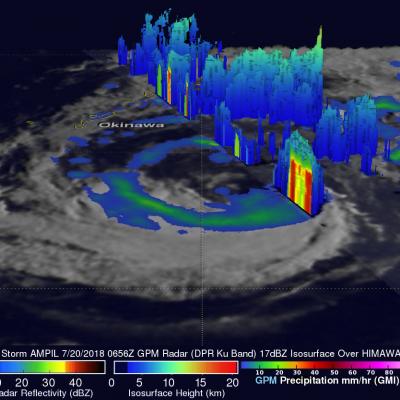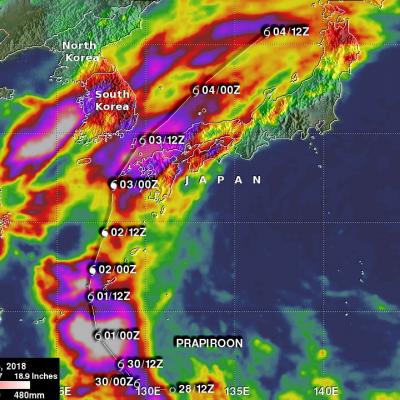Subtropical Depression Five Observed By GPM
Subtropical Depression FIVE formed in the central Atlantic Ocean early today. The National Hurricane Center (NHC) classified it as subtropical. It is moving over warm ocean waters and has low vertical wind shear aloft so the system is predicted to slightly intensify. The GPM core observatory satellite passed above the western side of newly formed Subtropical Depression FIVE on August 15, 2018 at 1046 UTC. The GPM's Microwave Imager (GMI) and Dual-Frequency Precipitation Radar (DPR) instruments revealed that most of the rainfall within the subtropical depression was outside the middle of the


